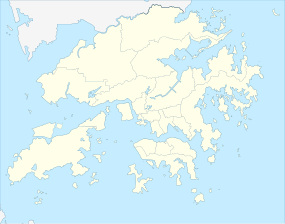Lei Cheng Uk Han Tomb Museum
| 李鄭屋古墓 | |

Entrance of the Lei Cheng Uk Han Tomb Museum on Tonkin Street, with Lei Cheng Uk Estate in the background.
|
|
| Location | Sham Shui Po District, Hong Kong |
|---|---|
| Region | Kowloon Peninsula |
| Coordinates | 22°20′17.14″N 114°09′36.08″E / 22.3380944°N 114.1600222°ECoordinates: 22°20′17.14″N 114°09′36.08″E / 22.3380944°N 114.1600222°E |
The Lei Cheng Uk Han Tomb Museum (Chinese: 李鄭屋古墓; Jyutping: lei5 zeng6 nguk1 gu2 mou6) is composed of a brick tomb ( E.Han or slightly later) and an exhibition hall adjacent to it. It is located at 41 Tonkin Street, in Cheung Sha Wan, Sham Shui Po District, in the northwestern part of the Kowloon Peninsula of Hong Kong.
According to the structure, calligraphy and content of the inscriptions on tomb bricks and to the tomb finds, the tomb is commonly believed to have been built during the Eastern Han dynasty (AD 25 – 220) although the Southern Dynasties period was also suggested. It was probably built for a Chinese officer attached to the local garrison.
The tomb is constructed of bricks (average size 40x20x5cm) and consists of four chambers set in the form of a cross. The dome vault at the center was constructed by laying bricks in a spiral, while the other chambers are barrel vaulted. Some bricks are stamped or carved with inscriptions or patterns on the exposed sides. It is believed that the rear chamber is the coffin chamber, that side chambers were used for storage, while ritual ceremonies were performed in the front chamber under the domed roof.
The tomb's cross-shaped structure and the burial objects found inside show great similarities as compared to other Han tombs found in South China, which prove that early Chinese civilisation had spread to Hong Kong 2,000 years ago. The inscription Panyu (番禺) on tomb bricks further confirms the dating, since, according to historical records, Panyu was the name of the county to which the present territory of Hong Kong belonged during the Han dynasty. Also, the style of the calligraphy used in the inscriptions was an angular version of lishu (clerical script) which was generally used in inscriptions on bronze wares and stones during the Han dynasty. There were no bodies found in the tomb.
...
Wikipedia

